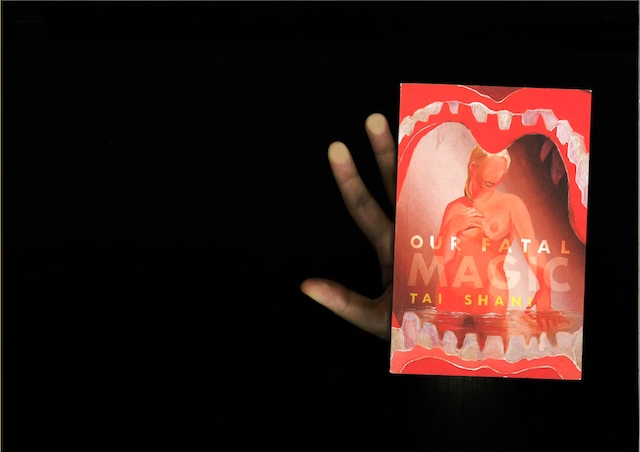“New year, new me!” – ArtReview has never said. New Year’s resolutions are founded on guilt and aspiration, neither of which it suffers from. Besides, why run a marathon when you can read transcriptions of Hans Ulrich Obrist and Alison Cuddy’s conversations with ‘creatives’ including Dawoud Bey, Theaster Gates and architect Jeanne Gang in Creative Chicago: An Interview Marathon (Terra Foundation & The University of Chicago Press, $19.95)?
Instead, it prefers to leave change to those who are invested in studying it, like art historian Terry Smith, author of Art to Come (Duke University Press, $30.95). ArtReview isn’t about to set foot into time’s flowing river, because Smith, who sees linearity as an ‘old-fashioned’ way of thinking about time, kicks up the silt of art history to present us with a historiography of contemporaneity. That’s a fancy way of saying a study of written histories (in this case of art) at, and about, the time in which they were written. (And anyway, ArtReview doesn’t want to get its toes dirty.) To that end, he takes us through ‘contemporary’ buzzwords and ways of thinking about issues like globalisation, the Anthropocene, decolonisation, indigenisation, revived fundamentalisms and ecoactivism, to ask how we might harmonise our differences in a way that ‘ensures our mutual survival’ on this planet.
Paul B. Preciado’s An Apartment on Uranus (Fitzcarraldo Editions, £12.99) is another collection of writings around the topic of change, told through the critical theorist and curator’s experience of transitioning from Beatriz into Paul B. Throughout these 68 texts (originally published in French newspaper Libération from 2013 to 2018) he examines the ways in which certain bodies are treated as inferior ‘to that of a citizen whose gender and nationality are recognized by the administrative conventions of the nation-states they inhabit’. The writings thread together concepts around the liminal spaces of subjects ranging from language and gender to migration and cities in flux, using a markedly corporeal language that encourages an empathic reading: ‘Transsexuality is a silent sniper who plants a bullet in the chests of children standing in front of a mirror or counting their steps on their way to school… For those who have the courage to look straight at the wound, the bullet becomes the key to a world they had seen nothing of before.’
The poet and occasional filmmaker H.D. (aka Hilda Doolittle) might have liked Paul B. The founding member of Imagism did, after all, write that in order to reach a higher state of consciousness, the mind and body had to synthesise. The brain alone is ‘a disease comparable to a cancerous growth or tumour’, while the body ‘without reasonable amount of intellect is an empty fibrous bundle of glands’. Four texts by H.D. accompany ‘Notes on Thought and Vision’ (1919) in Visions and Ecstasies (David Zwirner Books, £8.95), all written shortly after she contracted pneumonia nine months into her pregnancy (and was not expected to survive), and the resulting essays knit this traumatic experience together with her interest in Greek mythology, challenging gender roles and the development of modernist art.
The clear, direct language championed by the Imagist poet, the kind that could crystallise an image in the mind of the reader, is difficult to locate in Ed Atkins’s Old Food (Fitzcarraldo Editions, £9.99). Resisting any traditional genre, this text was written following the artist’s 2017 exhibition of the same title, which featured videoworks of weeping CGI characters and racks of period costumes. The broken lines and images read like a stream of consciousness unanchored to a specific time or place – though a mention of Wotsits and Starbucks indicates that it’s set in the UK sometime from the late 1990s. Atkins, reflecting on the absence of humans in the exhibition, here favours the visceral impact of associated images and words, pumping the poetry-prose with lines that speak of our primeval instincts, needs and desires, in order to ‘seek empathic commons’, and at the same time reduces the human body to a meatbag: ‘We were, I / think, to one another, glazed hams / repast in a hot stint, pocked with / squeaking pickled eyeballs.’
What would society look like if women didn’t need to worry about shattering male egos? Why, they would go mad with power, of course. Tai Shani’s 12-part performance project DC: Semiramis (2018) offered a glimpse into this possible world, in which otherworldly characters from an allegorical postpatriarchal city (inspired by Christine de Pizan’s The Book of the City of Ladies, 1405) deliver monologues, and is now published as a collection of experimental prose in Our Fatal Magic (Strange Attractor Press, £12.99). ‘Sirens’ is told from the point of view of a group of women as they begin to transform, not into Ovid’s winged creatures, but into a kind of omnipresent digital entity whose voice forces the listener to bleed ‘thin rivulets of blood, like streaming red ribbons from your ears’. H.D. would be proud.
From the October 2019 issue of ArtReview
